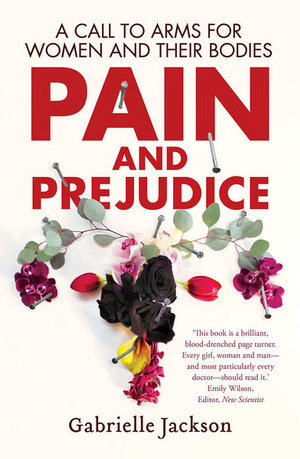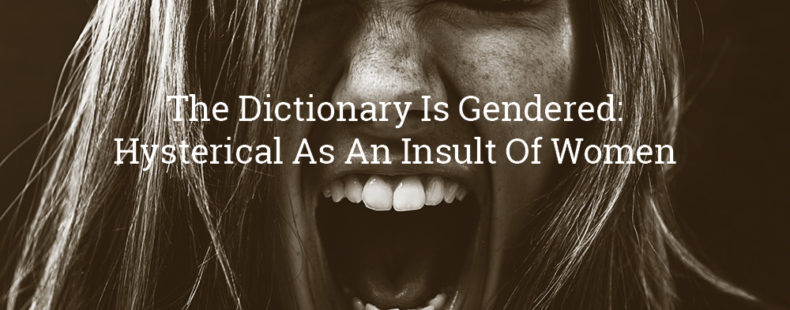In general women live longer than men, but they are in
more pain. They are not taught to know their bodies or talk about their
ailments; they are meant to nurture and support others before themselves. Women
aren’t accustomed to discussing ‘female ailments’ – menstruation, menopause and
sexual pain are still relatively taboo topics. Many women can’t identify their reproductive
organs on a diagram and are certainly not meant to talk about them, as it is
considered shameful. An influential study by Melissa Parker on Australian girls
found that 93% of them experienced some period pain. About 20% experience
severe pain, 24% say their period interferes with four out of nine life
activities, and 26% miss school because of pain. “So a quarter of girls are
missing school because of pain, and nobody thinks it’s a problem?”
When women demand attention, over their health or issues of equality, they are often labelled as hysterical, and “As an insult, ‘hysterical is still disarmingly effective.” Yet, when men present with the exact same symptoms, it is called shellshock or PTSD. Traditionally medicine was a male profession, and women are often not believed about their own health. In the late nineteenth and early twentieth century, “medicine became an elite profession and took over from religious institutions as the primary enforcers of the social roles of women.”
Because the default case study for all ailments is
male, “We assume that the ways in which women are different from men must be
the ways in which women are inferior or broken or diseased when in fact it
might be that women are just different.” Symptoms of heart attacks are
different in women and often misdiagnosed. A World Health Organisation report
explains, “It has traditionally been thought of as a man’s disease which has
led to deadly consequences for women – in 2004, 7.4 million women over 60 years
of age died of cardiovascular disease compared with 6.3 million men.” Stress is
a factor in heart disease, but women are often dismissed as suffering from
nothing but anxiety when men who present with the same symptoms are diagnosed
with heart disease.
| Before 1993 there was no legal requirement to include women in clinical trials |
Many clinical tests only use men in their trials,
which can prove fatal to women. In 1993, the US Food and Drug Administration
and the National Institutes of Health mandated the inclusion of women in
clinical trials. Before then, trials were routinely carried out on men only,
including: a twenty-year longitudinal study (began in 1958) to explore whether
taking an aspirin every day could reduce the risk of heart disease (conducted
in 22,071 men and no women); a 1982 trial looking at whether dietary change and
exercise could help prevent heart disease (conducted in 13,000 men and no
women), and even a trial in the 1960s to investigate whether supplementation
with oestrogen was an effective preventive treatment for heart disease
(conducted in 8341 men, and no women).
Women generally experience more chronic pain than men –
they suffer pains that cannot be seen, so they are often discounted, and pelvic
pain is “also beset by stigmas and taboos that make it difficult for women to
talk about their sex organs or anything related to them.” When women are believed about experiencing pain,
they are often thought to be exaggerating. “Even female doctors, after training
and working in the heavily masculinised medical culture, can view this language
as confronting and histrionic.”
 |
| Women suffer more chronic pain than men |
There are several overlapping pain conditions and women
who suffer from one are likely to also suffer from others. These include endometriosis;
vulvodynia; fibromyalgia; chronic fatigue syndrome/ myalgic encephalomyelitis;
interstitial cystitis/ painful bladder syndrome; temporomandibular joint
disorders; irritable bowel syndrome; chronic tension-type headache; chronic
migraine and chronic low back pain. “Chronic pain conditions aren’t conditions
that kill us but they radically alter our opportunities to reach our full
potential in life… Pain doesn’t actually kill people – it keeps women in the
home and out of work, which has no effect upon the power structures of society,
providing no incentive for action.”
Doctors don’t really want to see patients who are
difficult to diagnose and harder to fix as it looks bad for their figures and
solved statistics: they even call them ‘heart-sink patients’. Women are aware
of this stigma, and when they are told they have medically unexplained
symptoms, anxiety, depression or are disbelieved, they can move from doctor to
doctor in order to find a diagnosis or treatment relief. “In an exasperating
development, ‘doctor-shopping’ has come to be seen as an indicator that pain is
made up, rather than a result of pain doctors won’t believe.”



No comments:
Post a Comment